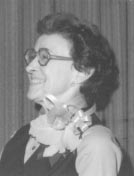مشروع فينونا
مشروع فينونا هو برنامج مكافحة التجسس بالولايات المتحدة تم إطلاقه خلال الحرب العالمية الثانية من قبل جهاز استخبارات التابع لجيش الولايات المتحدة.[2]

نبذة عدل
استمرت المشروع من 1 فبراير 1943 حتى 1 أكتوبر 1980 وكان الغرض منه فك تشفير الرسائل التي تنقلها وكالات الاستخبارات في الاتحاد السوفيتي.[3]
البدايات عدل
بدأ عندما كان الاتحاد السوفياتي حليفًا للولايات المتحدة أثناء الحرب العالمية الثانية واستمر البرنامج خلال الحرب الباردة.[4]
خلال مدة 37 عام من مشروع فينونا جُمع حوالي 3000 رسالة سوفيتية وشملت تجسس كامبريدج في المملكة المتحدة والتجسس السوفيتي لمشروع مانهاتن في الولايات المتحدة.[5]
ظل مشروع فينونا سراً لأكثر من 15 عام بعد انتهائه ولم يتم رفع السرية عن بعض الرسائل السوفيتية المشفرة من قبل الولايات المتحدة ونشرت في عام 1995.[6]
مراجع عدل
- ^ Crowell، Mr. William P. (11 يوليو 1995). "Remembrances of Venona". nsa.gov. مؤرشف من الأصل في 5 مارس 2016. اطلع عليه بتاريخ 7 فبراير 2016.
- ^ Commission on Protecting and Reducing Government Secrecy. "A Brief Account of the American Experience" (PDF). Report of the Commission on Protecting and Reducing Government Secrecy. VI; Appendix A. US Government Printing Office. pp. A–27. Archived from the original (PDF) on 2011-05-04. Retrieved 2006-06-26. "Thanks to successful espionage, the Russians tested their first atom bomb in August 1949, just four years after the first American test. As will be discussed, we had learned of the Los Alamos spies in December 1946—December 20, to be precise. The US Army Security Agency, in the person of Meredith Knox Gardner, a genius in his own right, had broken one of what it termed the Venona messages—the transmissions that Soviet agents in the United States sent to and received from Moscow."
- ^ Commission on Protecting and Reducing Government Secrecy. "A Brief Account of the American Experience" (PDF). Report of the Commission on Protecting and Reducing Government Secrecy. VI; Appendix A. US Government Printing Office. pp. A–7. Archived from the original (PDF) on 2011-05-04. Retrieved 2006-06-26. "KGB cables indicated that the Office of Strategic Services (OSS) in World War II had been thoroughly infiltrated with Soviet agents."
- ^ "Eavesdropping on Hell" (PDF). National Security Agency. Retrieved 2006-06-26. "Currie, known as PAZh (Page) and White, whose cover names were YuRIST (Jurist) and changed later to LAJER (Lawyer), had been Soviet agents since the 1930s. They had been identified as Soviet agents in Venona translations and by other agents turned witnesses or informants for the FBI and Justice Department. From the Venona translations, both were known to pass intelligence to their handlers, notably the Silvermaster network."
- ^ The first response to Lowenthal was Mark, Eduard (2003). "Who was 'Venona's' 'Ales'? cryptanalysis and the Hiss case". Intelligence and National Security. 18 (3): 45–72. doi:10.1080/02684520412331306920. Following this there was an extended discussion on h-net diplo list and the h-net list for the history of American communism. For a summary of a draft response from Lowenthal (he died in 2003) see Lowenthal, David; Roger Sandilands (2005). "Eduard Mark on Venona's 'Ales': A note". Intelligence and National Security. 20 (3): 509–512. doi:10.1080/02684520500269051. Another response following this was Bird, Kai; Svetlana Chervonnaya (2007). "The Mystery of Ales (Expanded Version)". The American Scholar. This gave rise to a conference paper: Haynes, John Earl; Harvey Klehr (2007-10-19). "Ales is Still Hiss: The Wilder Foote Red Herring". Archived from the original on 2012-07-28. (archived version) and finally a response from Mark again (he died in 2009): Mark, Eduard (2009). "In Re Alger Hiss". Journal of Cold War Studies. 11 (3): 26–67. doi:10.1162/jcws.2009.11.3.26.
- ^ Moynihan, Daniel Patrick (1998). Secrecy: The American Experience. Yale University Press. p. 54. ISBN 978-0-300-08079-7. "these intercepts provided ... descriptions of the activities of precisely the same Soviet spies who were named by defecting Soviet agents Alexander Orlov, Walter Krivitsky, Whittaker Chambers, and Elizabeth Bentley."
| في كومنز صور وملفات عن: مشروع فينونا |